Wikipedia writes, "a celebrated marble sculpture from classical antiquity...The work has been dated to mid-way through the 2nd century A.D. and is considered to be a Roman copy of an original bronze statue created between 330 and 320 B.C. by the Greek sculptor Leochares...rediscovered in central Italy in the late 15th century...placed on semi-public display in the Vatican Palace in 1511, where it remains...The lower part of the right arm and the left hand were missing when discovered and were restored by Giovanni Angelo Montorsoli (1507–1563), a sculptor and pupil of Michelangelo...From the mid-18th century it was considered the greatest ancient sculpture by ardent neoclassicists, and for centuries it epitomized the ideals of aesthetic perfection for Europeans and westernized parts of the world.
Below, copies of the famous statue as seen in numerous museums, country houses, and gardens. In the Neoclassical Age, no forms of art were more revered than those of the ancient Greeks and Romans.
Below, Apollo in the Marble Hall of Kedleston Manor, as designed by the famed architect Robert Adam (1728-92).
Below, at the opposite end of the Great Hall from The Dying Gaul at Syon House in Greater London.
Right, the Apollo on the insgnia of NASA's Apollo 17, the sixth moon landing, in 1972 .

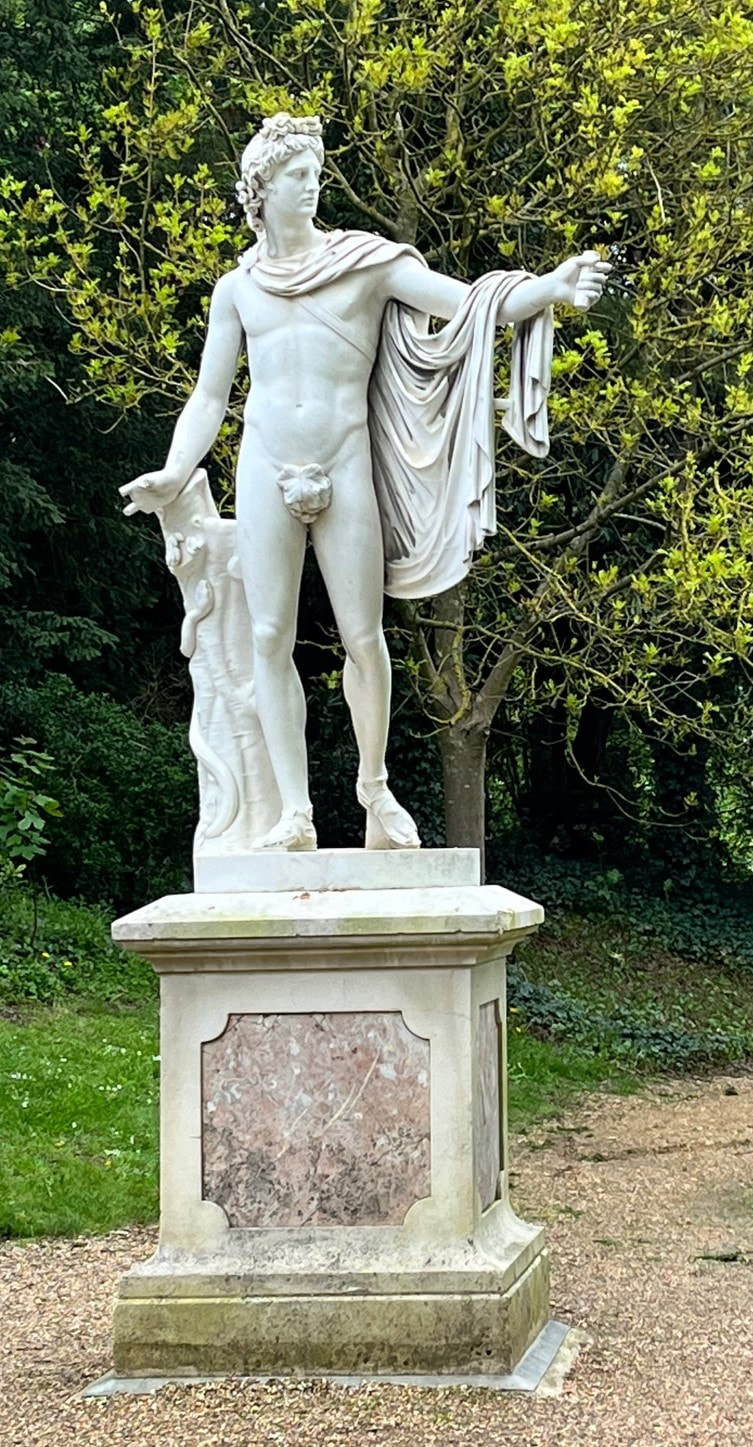
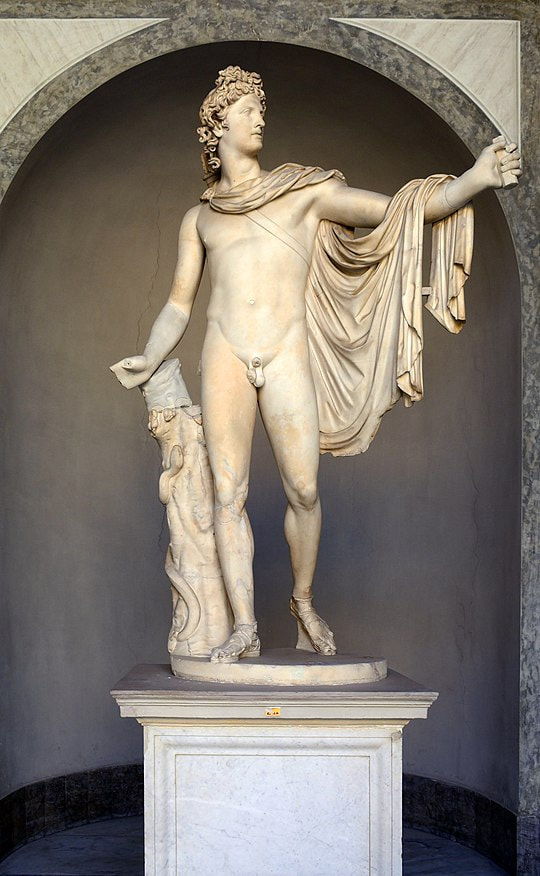
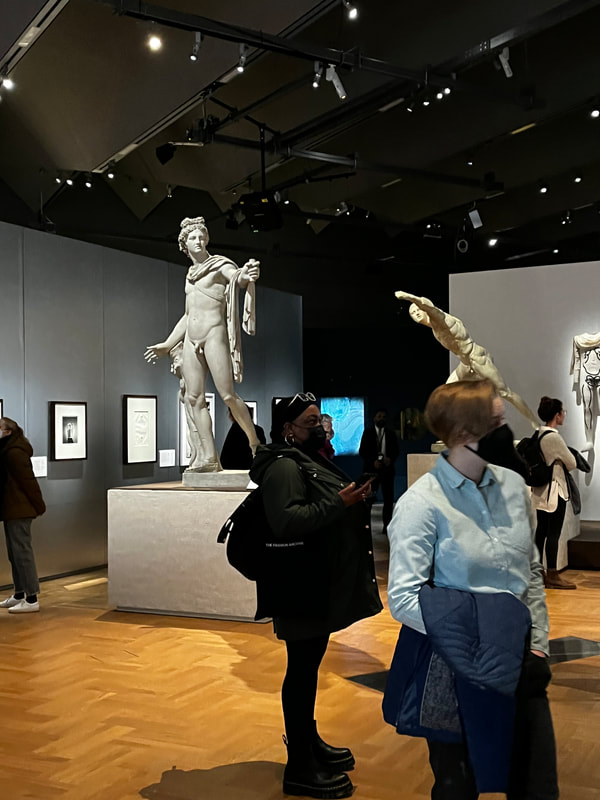
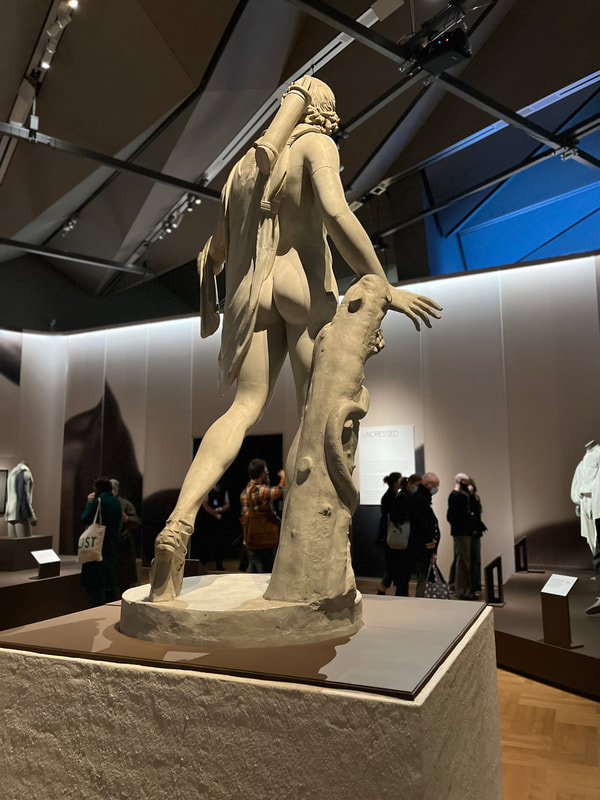
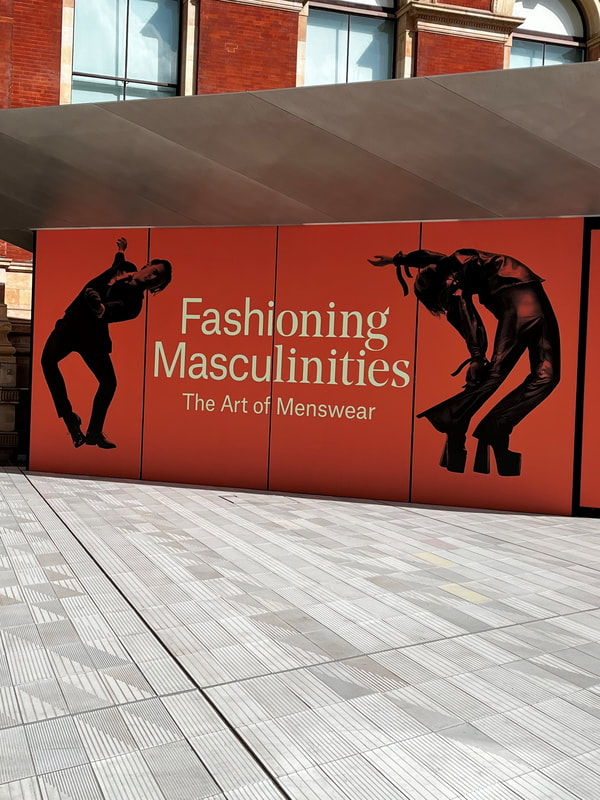
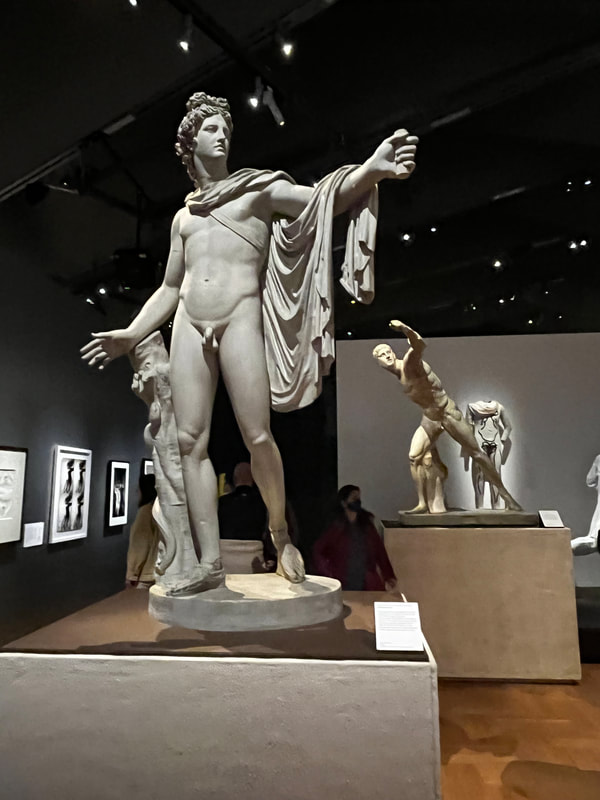
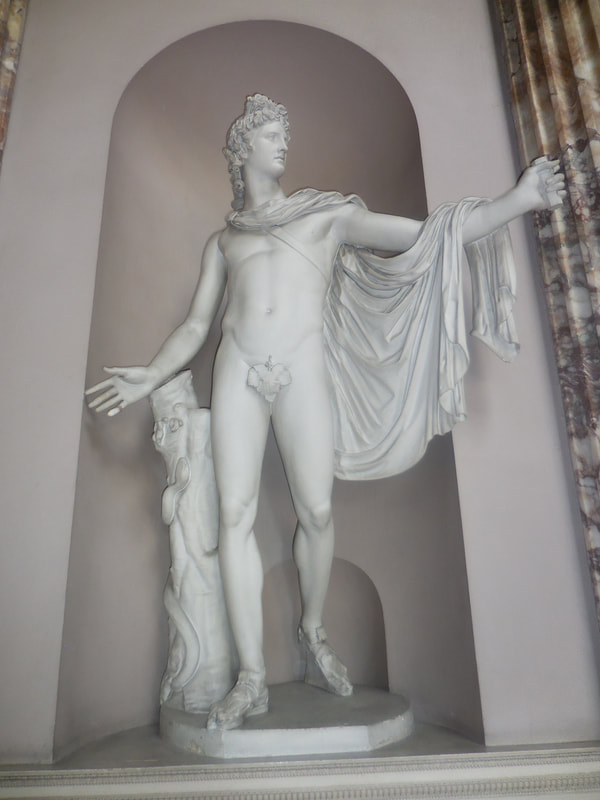
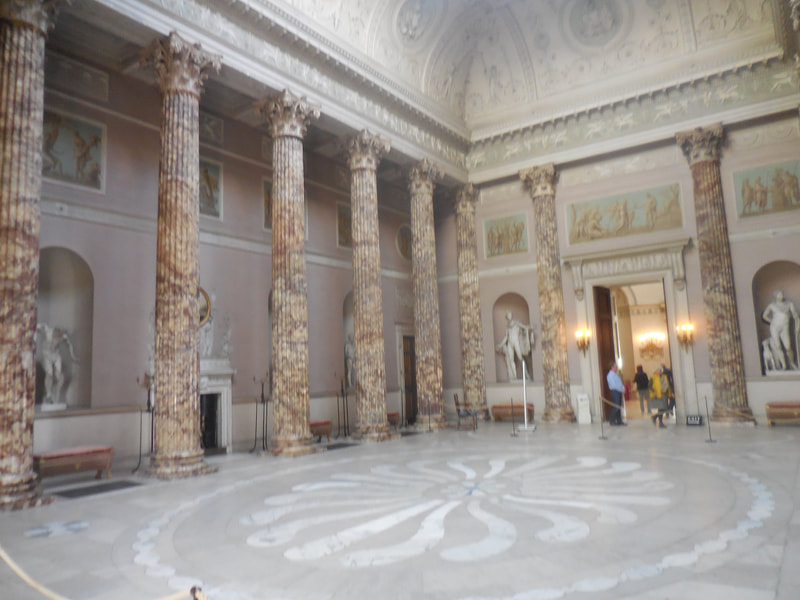
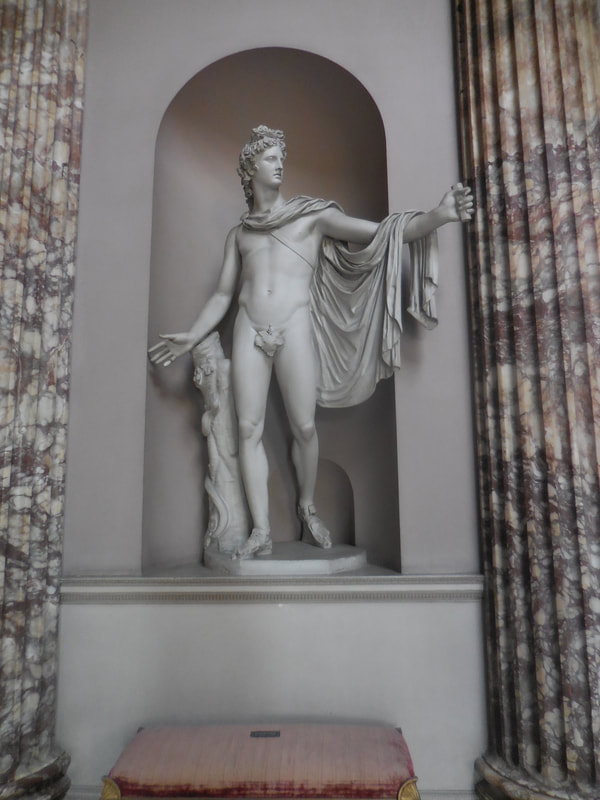

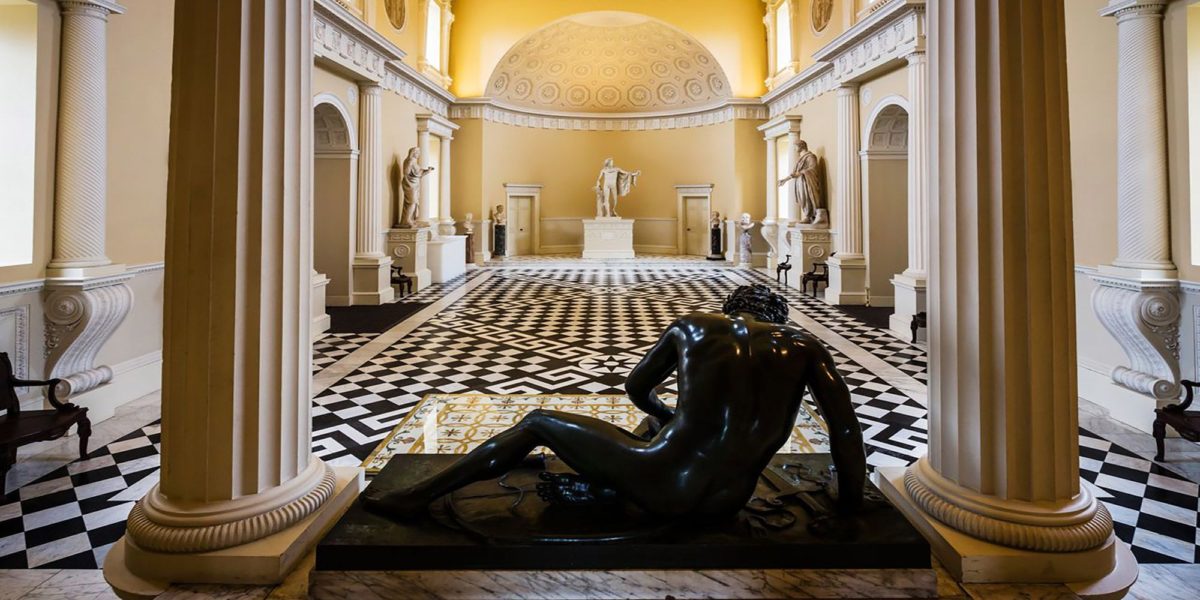
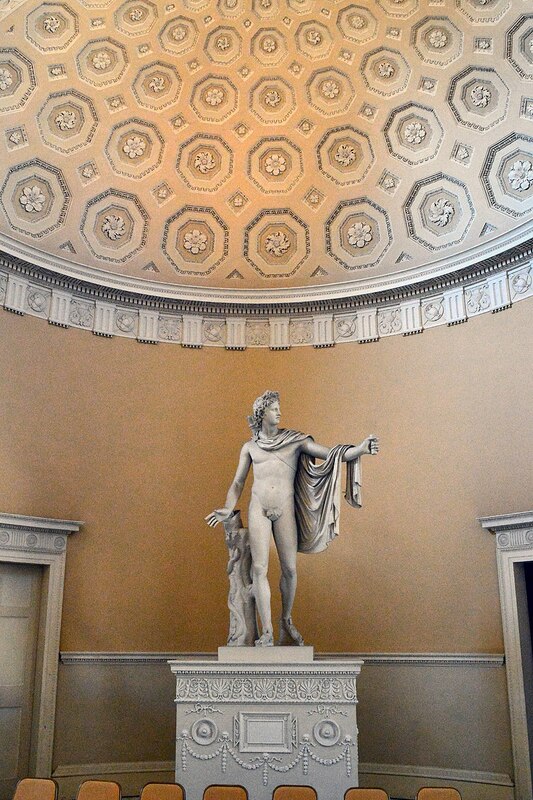
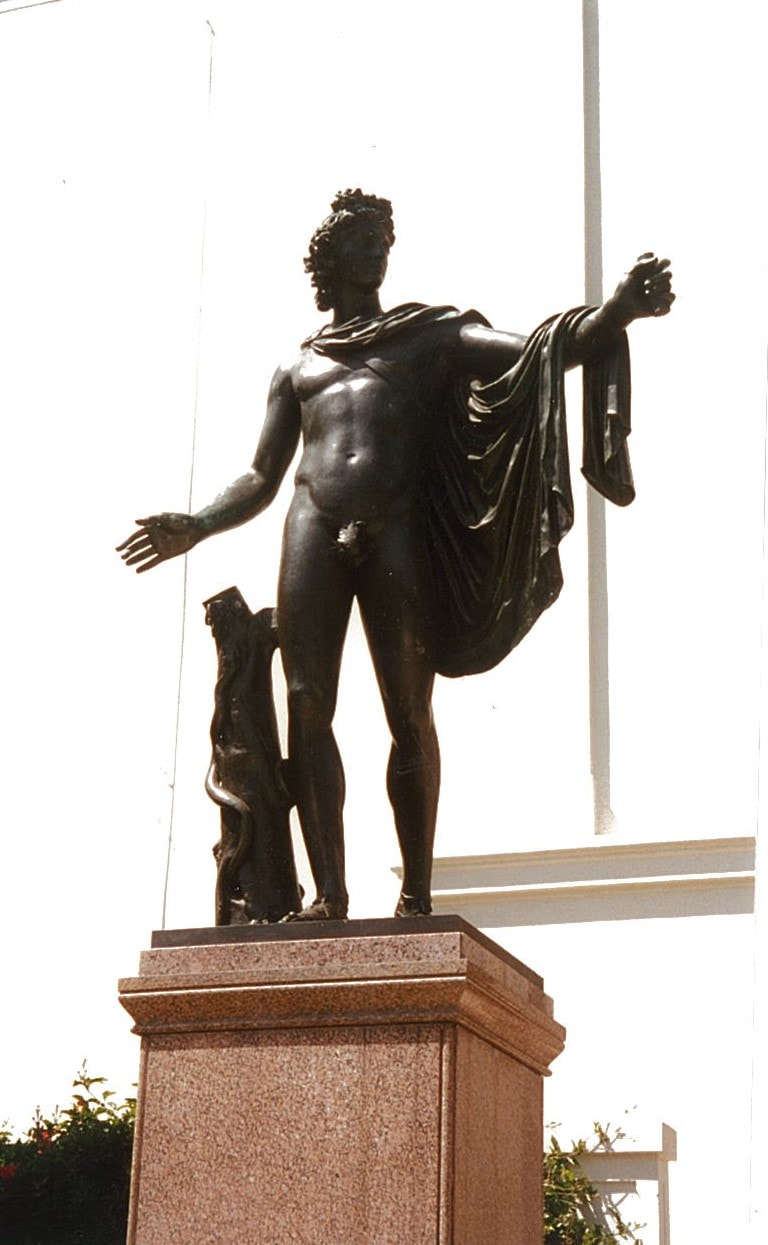
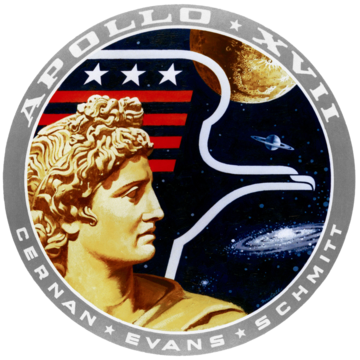
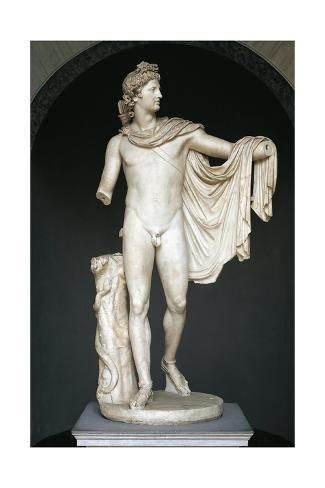
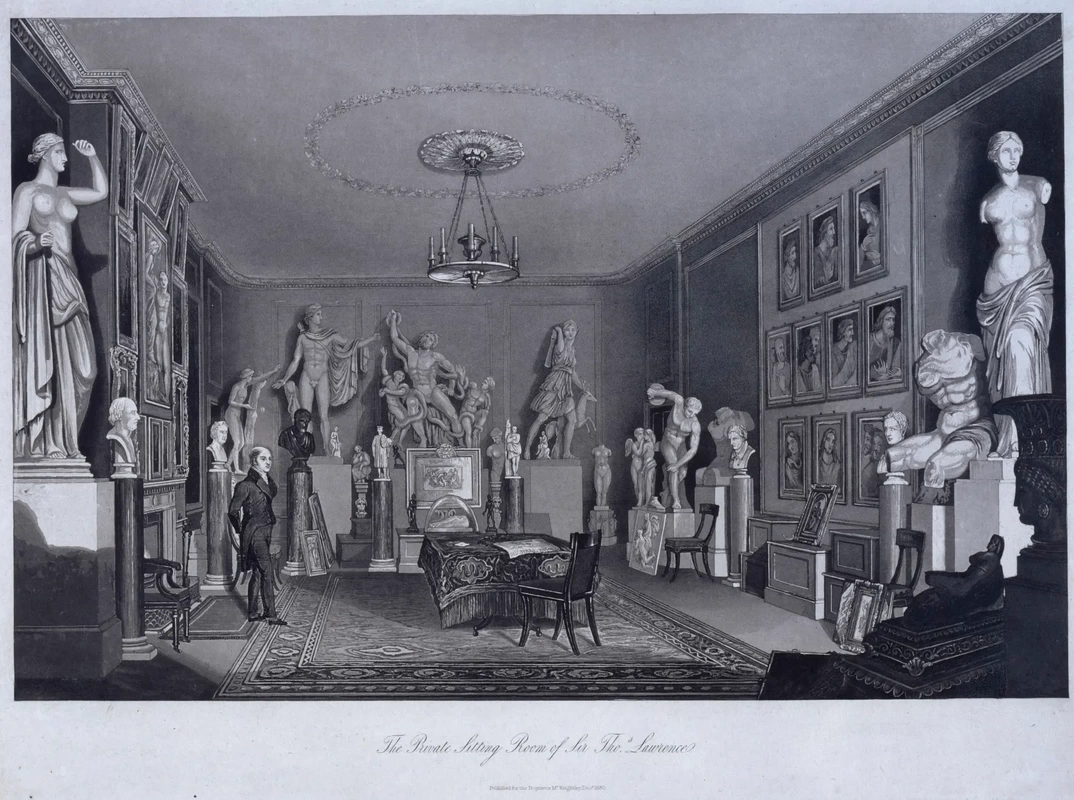
 RSS Feed
RSS Feed